Affiliate links on Android Authority may earn us a commission. Learn more.
Here's what it's like using the Nothing Phone 1 in the United States
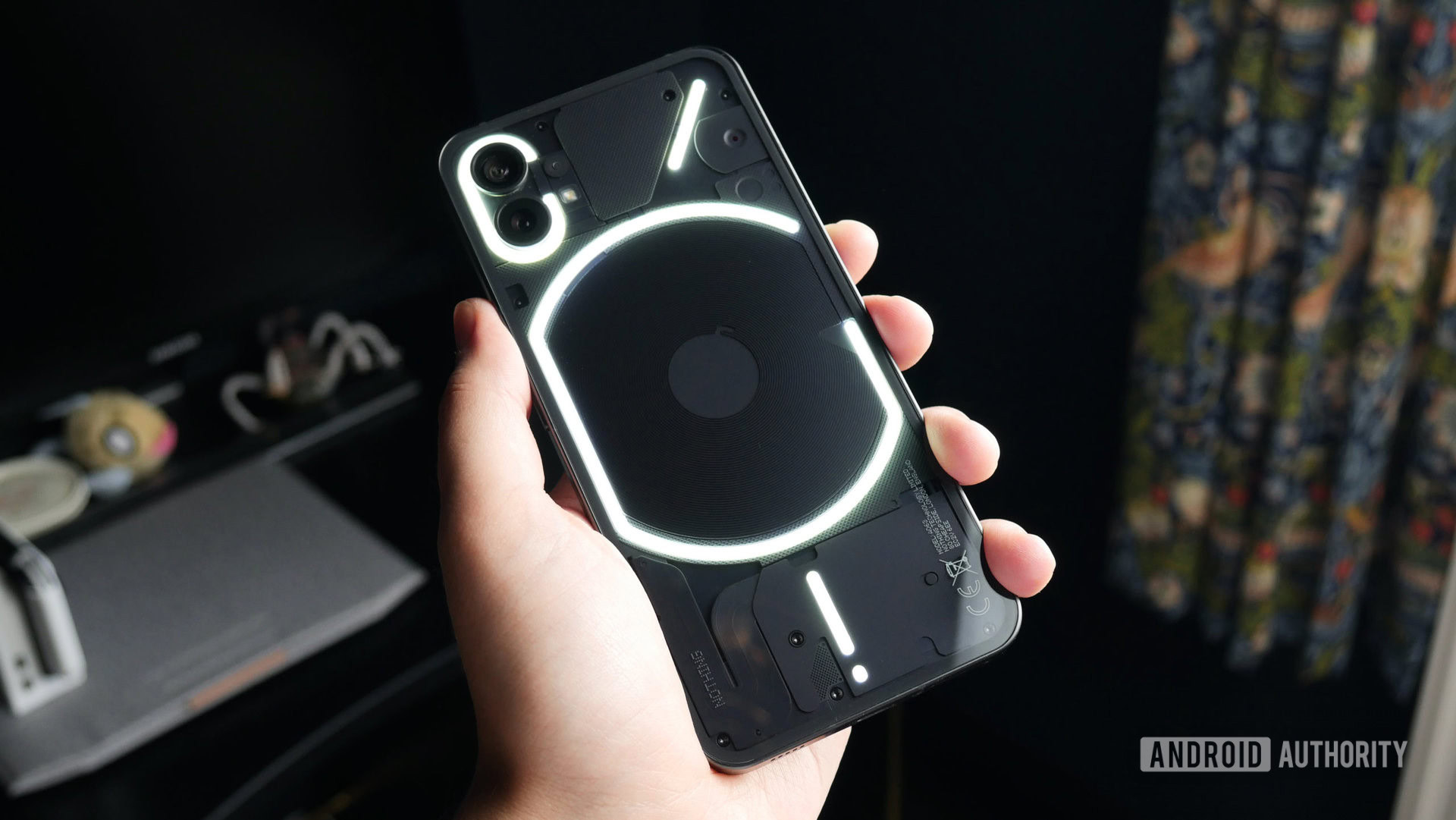
When the Nothing Phone 1 landed in the middle of 2022, US buyers were disappointed to hear that it would not come to the United States. A lack of carrier partnerships and a lack of proven marketability were likely the primary reasons behind this move. However, just because the phone isn’t sold here doesn’t mean you can’t use the Nothing Phone 1 in the US. You just can’t buy one and have it shipped to a US address.
This slightly changed at the beginning of 2023. Nothing opened up a new paid beta program for US buyers. For $299, you get a Nothing Phone 1 and early access to a beta version of Nothing OS 1.5, based on Android 13. This program ends on June 30, 2023, but beta testers can keep the phone permanently. Nothing makes it clear that certain things won’t work properly, but the core experience should be OK.
If you are wondering what it’s like to use the Nothing Phone 1 in the US, I got my hands on one.
Nothing Phone 1 in the US: It mostly works fine
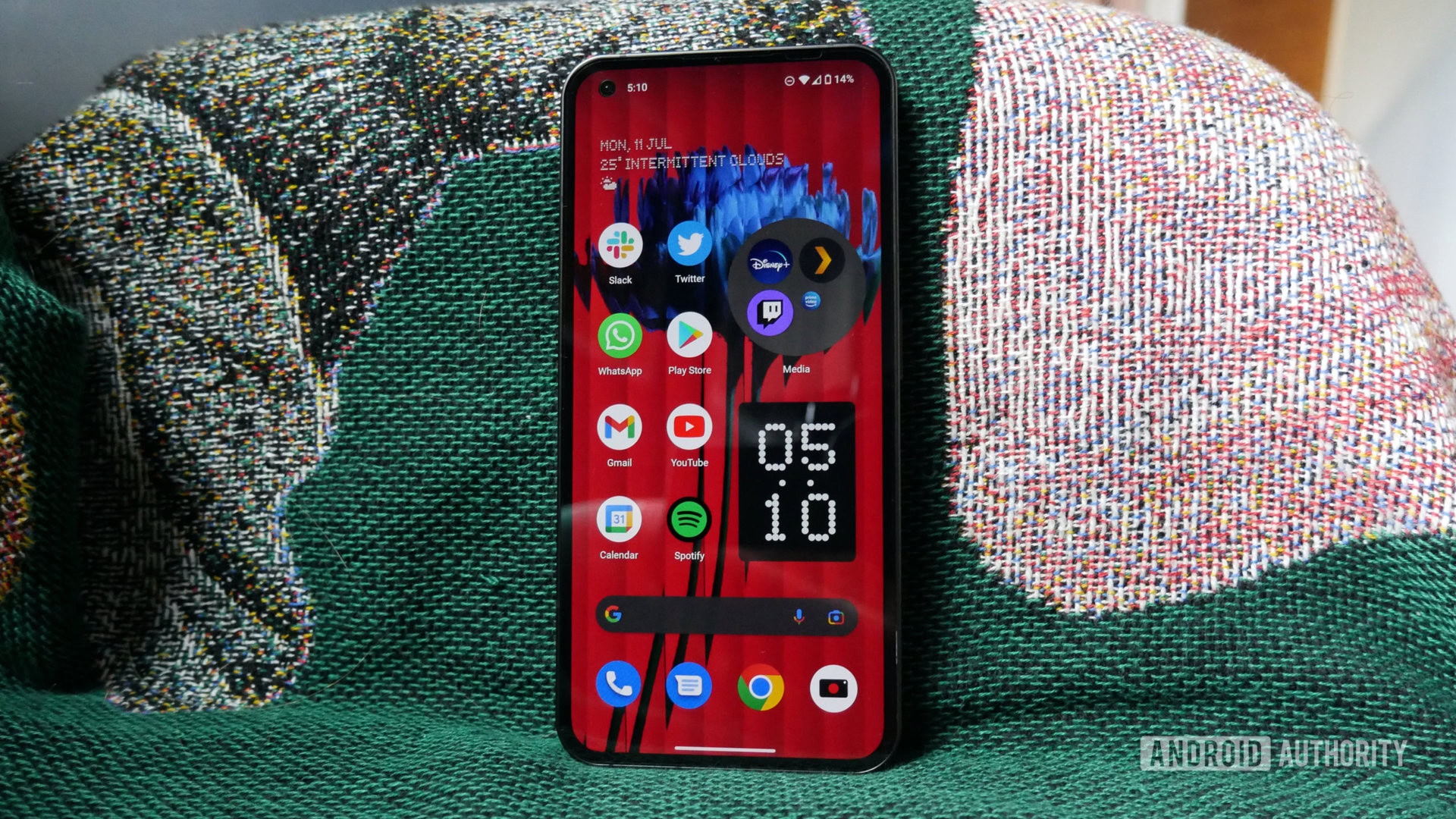
The primary aspects of a smartphone are not correlated to where you actually use it. Obviously, there’s no geographical limitation to snapping pics with the camera, for example. Gaming, connecting over Wi-Fi, accessing apps on the Google Play Store, and consuming music and videos; all work flawlessly on the Nothing Phone 1 in the United States.
The phone has also received numerous updates in the short time I’ve had it. When I took it out of the box, the Android 13 update was waiting for me. It then received two more updates, each one bringing enhancements, fixes, and even a handful of new features.
Most aspects of an Android smartphone work fine regardless of where the device might be located.
After all the Nothing OS behind-the-scenes drama, which Carl Pei told us about, it’s good to see Nothing commit to a more solid software experience. This Nothing OS 1.5 beta represents the first time the company is doing everything in-house, and so far, I’m pretty impressed. The software is lean without being anemic, and felt snappy and smooth during my testing. The quick and steady updates bode well for the future, too. I don’t want to jump to too many conclusions because this is technically beta software. However, I would have felt fine using this as my daily driver.
Of course, some of the problems and limitations of the Phone 1 we discussed in our review still stand. The camera is still not a flagship-quality system, and the chipset is still a mid-ranger. There’s still only an IP53 rating, and charging speeds are nothing to write home about. However, battery life was much better for me, which was nice to see. Still, many of these problems can’t be fixed with software, so you must temper your expectations if you’re coming from a flagship Samsung or Pixel phone. The very affordable $299 price of admission helps put all of that into perspective, though.
5G/LTE issues happened
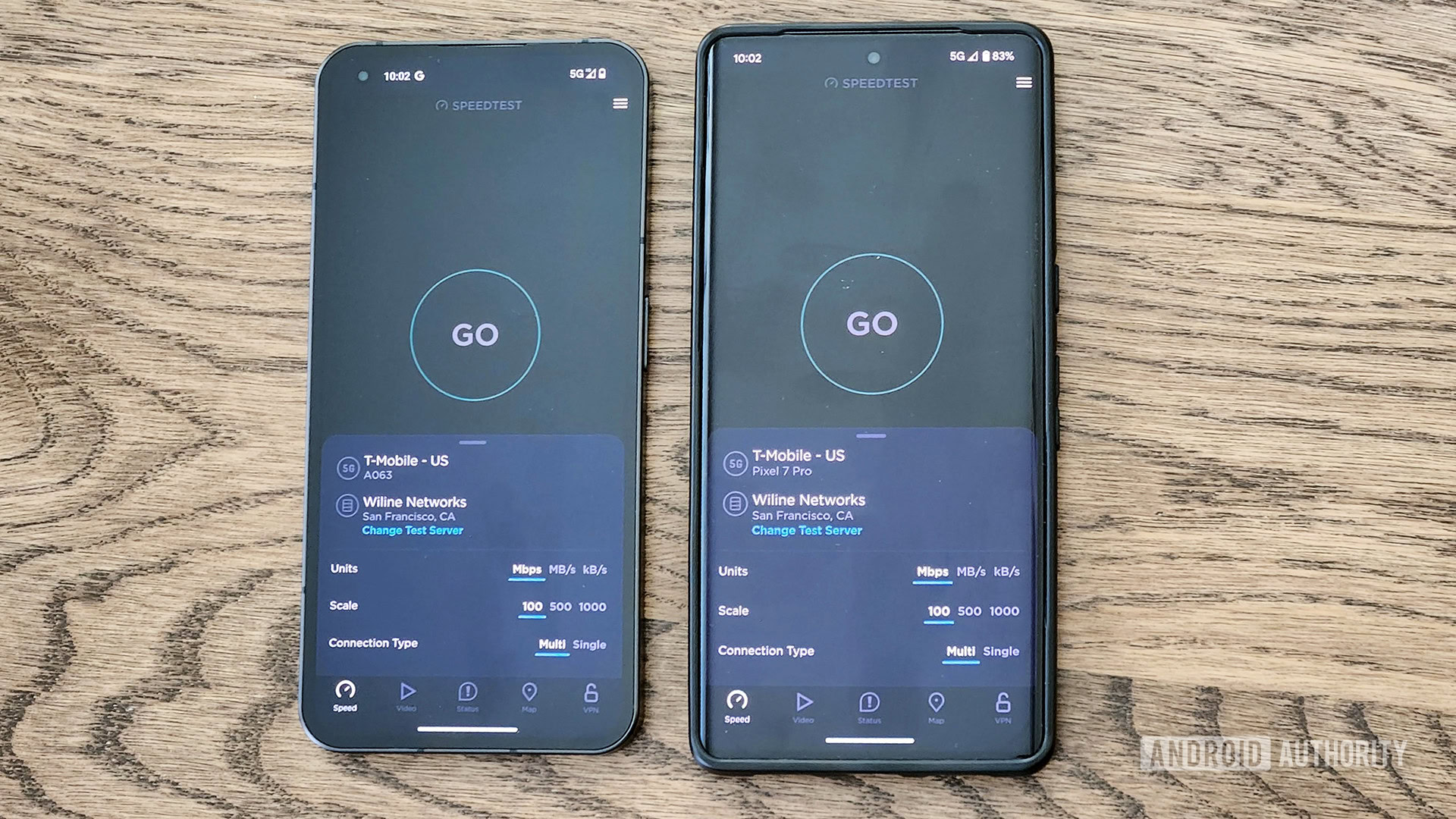
Nothing makes it clear that beta testers will face problems using the Phone 1 on the nation’s two largest carriers: Verizon and AT&T. Both carriers will not support 5G connections on the Phone 1, and Verizon coverage will be “very limited” (Nothing’s own words). T-Mobile is the best carrier for the Phone 1 as it will provide 3G, 4G, and 5G connections. However, even T-Mobile users won’t have full band support, so coverage could still be an issue in some areas where your current US-based smartphone has a strong signal.
I am a T-Mobile customer and had a T-Mo SIM in my Nothing Phone 1 during this testing period. In a nutshell, my connection experience was fine. I had service when I expected to have service, and my speeds appeared to be the same as those I saw from smartphones that are officially compatible with the US market.
On T-Mobile, the Nothing Phone 1 worked as I expected. However, when I went digging, I saw very different performance when compared to a US-based phone.
However, the keyword in that last sentence is “appeared.” If I didn’t scrutinize anything, the Phone 1 worked as I would expect any phone to work. But when I did some active testing, I saw that the Nothing Phone 1 has some significant connectivity differences compared to a US-based phone.
As part of my testing, I put the Nothing Phone 1 and my Google Pixel 7 Pro right next to each other and ran some speed tests with 4G and 5G connections (both phones had T-Mobile SIM cards). The results were pretty different. Check out some screenshots from my testing below (the Nothing Phone 1 is on the left, and the Pixel 7 Pro is on the right).
The screenshots above show some significant disparities between the two phones, mostly related to 4G download speeds and 5G upload speeds. These tests show that the Phone 1 isn’t getting the same speeds and reliability as the Pixel 7 Pro, regardless of location. Note that sometimes this works in the Phone 1’s favor, like with the slightly better up/down speeds on 4G at my home — but most other times, it does not.
It’s important to understand that speed tests such as these are not gospel. I ran each of these numerous times from the same position, connected to the same networks, and saw varying results. The screenshots above represent the results I saw most consistently. Generally, though, the Pixel 7 Pro had more stable results than the Phone 1.
See also: The best 5G plans in the US
Regardless, the important thing to note here is that I only noticed this when I looked for it. Even though the speeds were different on paper, I was still online. My apps opened, my web pages loaded, my music streamed, and my downloads completed. As long as you’re not looking for very specific connections/speeds, you should be OK using the Nothing Phone 1 in the US, at least on T-Mobile.
Trivial reminders that this is not a US phone
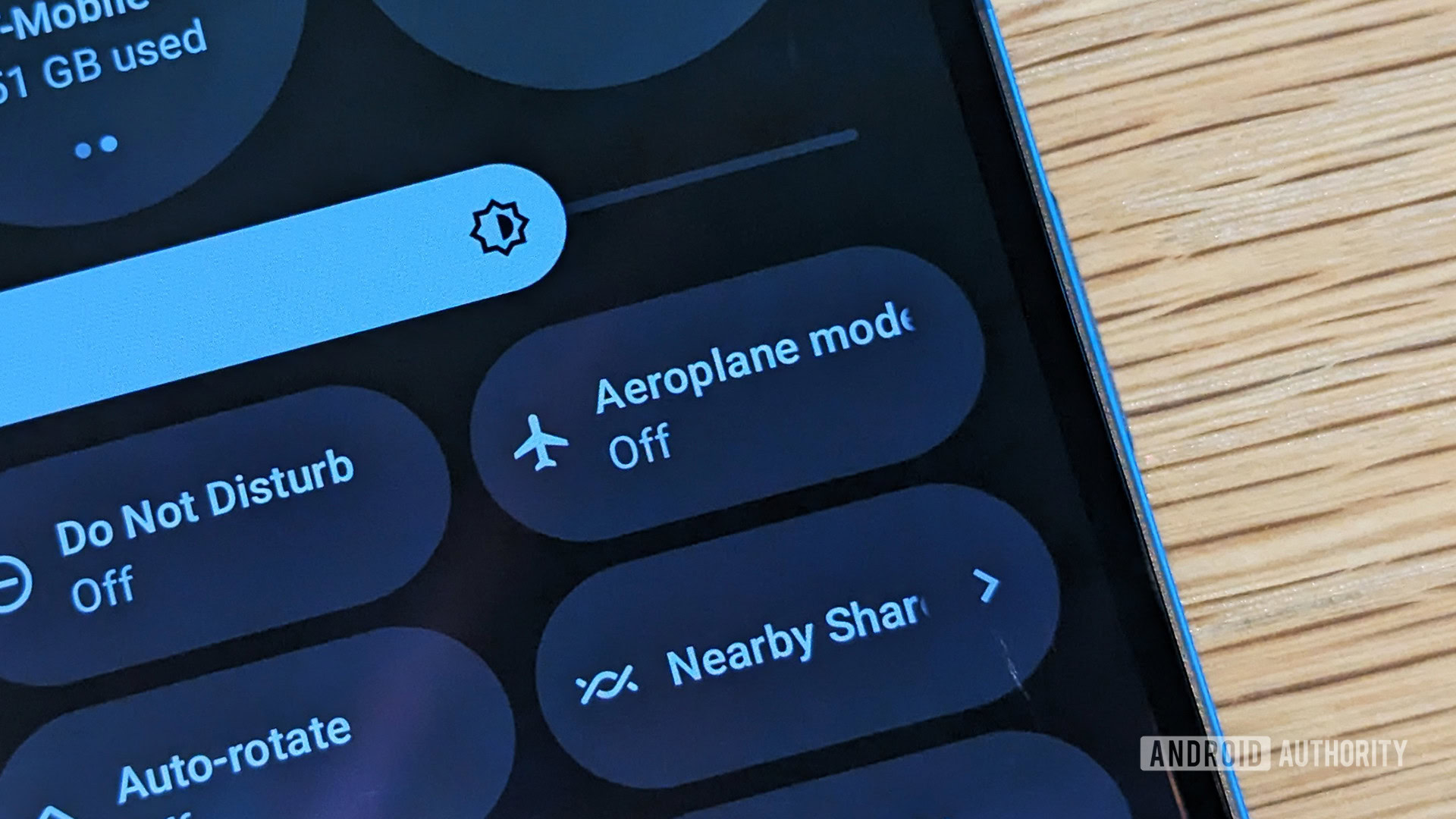
Nothing is based in London. Although it has a multi-national team, most of the integral team members live and work in the UK. As such, it should be unsurprising to see that UK-centric language and measurements are used by default throughout Nothing OS.
The image above shows that Airplane Mode is “Aeroplane Mode” on the Nothing Phone 1 in the US. You can also see “colour,” “minimise,” and “licence,” which are spelled differently in the US (color, minimize, and license). The Nothing-branded Weather app also has Celsius temperatures by default. While this is great for Anglophiles here in the US, it’s likely a bit disorienting for other users.
Although you can change it, you'll see UK-centric language and measurements when you first power on the Nothing Phone 1 in the US.
I’ll be the first to admit that these are trivial things. In fact, I kind of like it — it makes my phone feel a bit exotic. However, it proves that there’s been no optimization of Nothing OS for the US market. American users aren’t likely to have ever seen UK spellings on their smartphones before.
Of course, it’s easy to change this. You can go to Settings > System > Languages & input > Languages > Add a language and change the default language from “English (United Kingdom)” to “English (United States).” Conveniently, this also changes temperature measurements to Fahrenheit. Most Americans will never have done this and won’t know how, though, because they are used to seeing their own language right out of the box.
The Glyph is a reminder of how stale the US market is
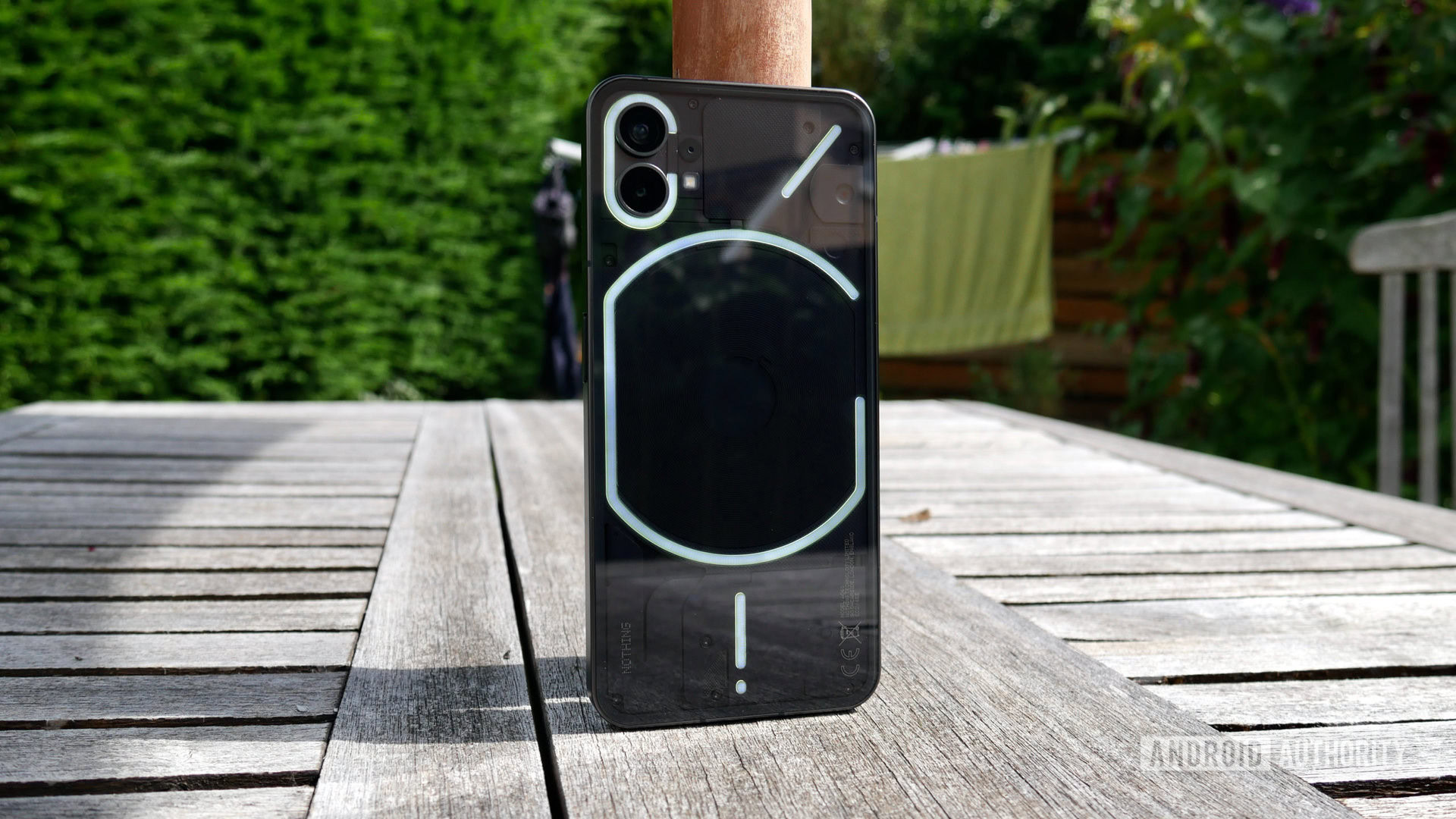
Carl Pei is adamant that the Nothing Phone 1 doesn’t look like an iPhone. He claims the squared-off sides and flat display are simply the most optimal way to design a smartphone, and the camera placement on the back is no different from most Android phones. However, regardless of what Carl says, most people I know who got a glimpse of the Phone 1 while I was using it thought it was an iPhone.
Since I’m a die-hard Android user writing for an Android-focused site, my friends immediately questioned why I was using an iPhone. I explained that it was actually an Android phone and showed them the device. Inevitably, they remarked how cool the clear back was and then squealed with delight when I showed them The Glyph.
See also: Carl Pei on the business of hype and building an ecosystem
These situations really sent home just how boring smartphones are in the US. 55% of smartphone owners use an iPhone, leaving less than 45% to Android. Of that 45%, the overwhelming majority are Samsung phones. Here, a device like the Nothing Phone 1 stands out like a sore thumb.
Because of these stats, the Nothing Phone 1 in the US becomes a statement — whether or not you want it to be one. Using this phone here will get people asking you about it, especially if you’re at a packed bar and The Glyph starts flashing when you get a phone call. I’m sure similar things happen in the UK and worldwide, considering no other phone has anything as innovative as The Glyph. But outside the US, seeing different phones with unique features and designs is pretty normal, whereas here, it’s a total surprise. Folks in the US interested in getting a Nothing Phone 1 should keep this in mind.
Nothing Phone 1 in the US: Should you get one?
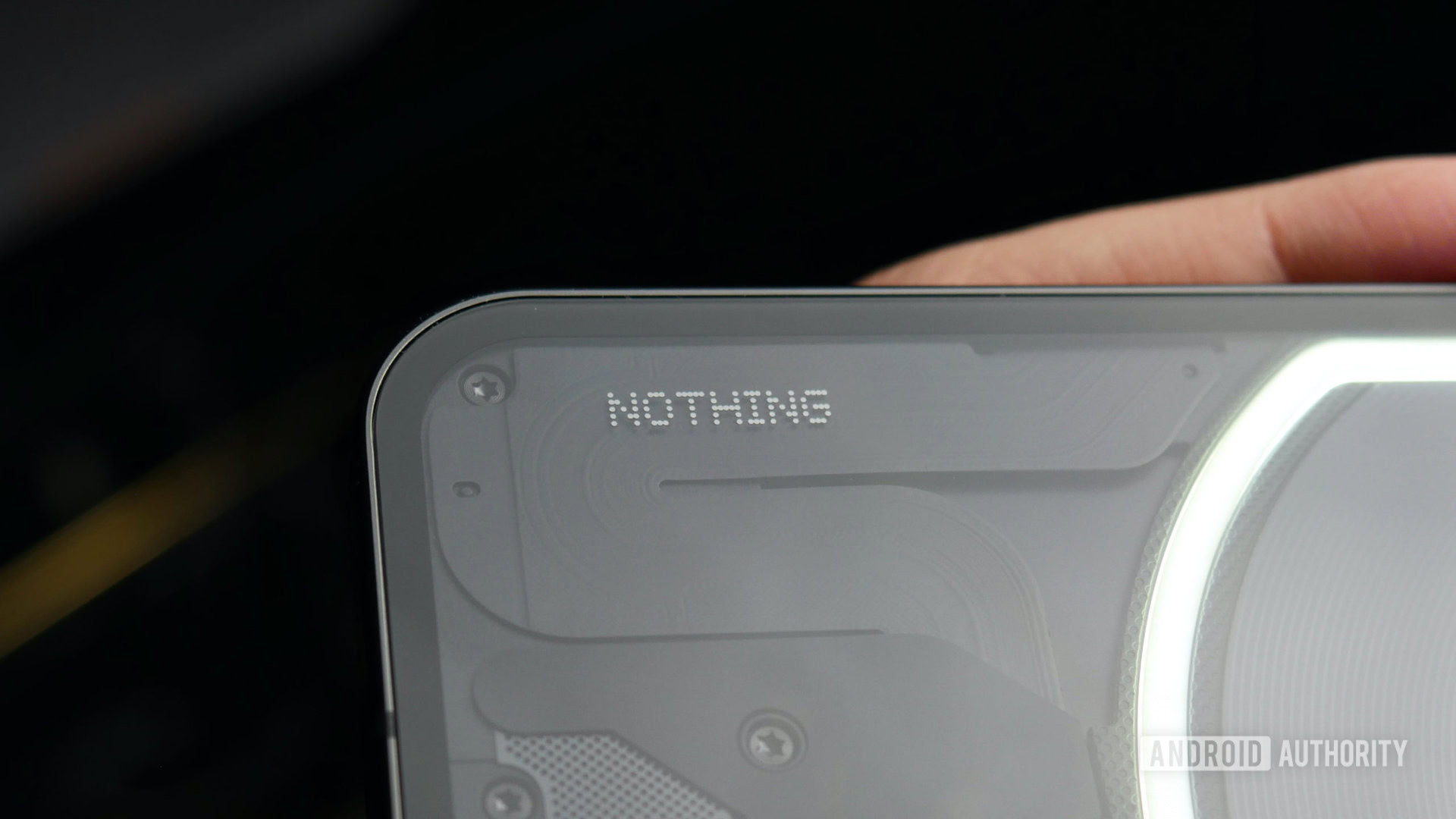
From now until the end of June 2023, people who live in the US can get a Nothing Phone 1 for just $299. It will have beta software, won’t work well on AT&T and Verizon, and you can’t choose your RAM/storage variant (you’re locked to the 8GB/128GB model).
However, for certain buyers, I think that’s worth it. At $299, the Nothing Phone 1 is the same price as a budget Motorola phone and over $100 less than even the Pixel 6a. If you already have a T-Mobile plan or are OK switching, you’ll likely be happy with the Nothing Phone 1 for what you’ll pay for it.
Of course, there will likely be a Nothing Phone 2 in 2023, and this device may see official support in the US. It might be worth waiting for that if you don’t need something immediately.
For me, the Nothing Phone 1 couldn’t sway me from my Pixel 7 Pro. The Pixel’s camera is much better, and the Pixel-exclusive software features make day-to-day usage easier. However, if I were looking for a cheap phone that looked cool and did the basics well, a $299 Nothing Phone 1 would be my top choice. Just approach it with realistic expectations, and you’ll be happy.